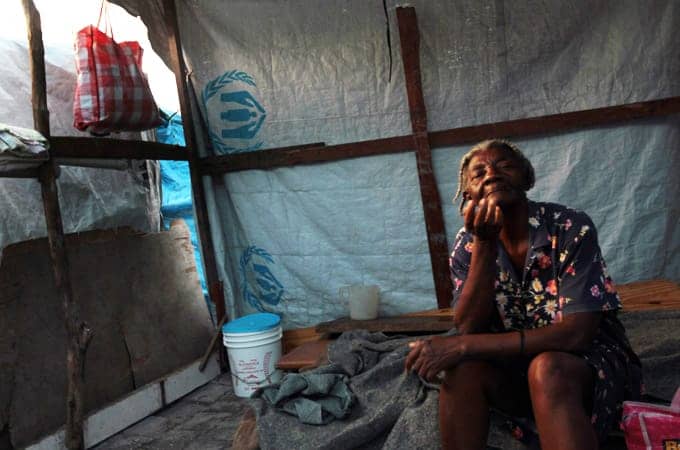
Juan O. Tamayo, writing for The Miami Herald, looks at how recent cuts in government subsidies in Cuba are an implicit admission that the cradle-to-grave safety net is no longer viable.
Until Sept. 1, Lara, a retired Havana teacher, boosted her meager pension by reselling the four cigarette packs she bought each month with her government-subsidized ration card.
Lara, 73 and a non-smoker, bought them for 11 pesos and sold them on the street for 31, a 20-peso bump to her 260-peso retirement income — roughly $10.83 a month.
“It was a pittance, but critical to surviving,” she said. “But now they’ve removed the cigarettes from the ration card. What am I do? Go hungry! You can’t live in Cuba on 260 pesos.”
As Cuban ruler Raúl Castro slashes state subsidies to overcome an abysmal economic crisis, he’s making daily life more expensive — and implicitly accepting that the country’s cradle-to-grave social safety net is no longer assured.
Castro declared last year that the revolution’s promise of egalitarianism is no longer sustainable, conceding that Cuba will see growing differences between the haves and have-nots.
“Raúl is dismantling parts of the social safety net, and the social stratification based on income and the expansion of inequality will grow,” said Mario González-Corzo, an economist at Lehman College in New York City who studies Cuba.
Cuba’s recent announcement that it will cut 500,000 public jobs — and hopes to shift them to the now tiny private sector — sparked fears that tens of thousands will wind up jobless.
But cutbacks in state subsidies over the past year — especially in the rations cards that provide limited but deeply discounted supplies of food and a few other items to Cuba’s 11.2 million people — already have increased the cost of living.
Hit especially hard have been retirees, the disabled, widows and others who live on fixed incomes, and the 40 percent of Cubans who don’t receive remittances from relatives abroad and must rely on salaries that officially average a mere $20 per month.
“This is seriously complicating the survival of the Cuban family, which is already very difficult,” said Darsi Ferrer, a Havana dissident who has studied the impact of the vanishing state subsidies.
Except for the health and education systems — still free yet increasingly tattered — Castro has cut subsidies steeply in many sectors to jumpstart an economy thrown into a tailspin by declining export and tourism income and a dearth of external finances.
The government closed thousands of workplace canteens that provided free lunches to 250,000 employees, paying them an estra stipend instead. Its inspectors also cracked down on fraudulent claims for the extra benefits granted to some Cubans, such as those with ailments that require increased food rations.
In the central city of Santa Clara, inspectors earlier this year shut off 4,700 of the 7,000 people who were receiving the special assistance, said Oscar Espinosa Chepe, a dissident Havana economist.
The government also cut subsidies to its “popular camping” sites — where Cubans vacation at rock-bottom prices for tents or simple cabins, usually near beaches.
But the biggest impact came from the shrinkage of the food and personal hygiene items provided through the ration card, a 50-year-old system that Fidel Castro repeatedly praised as the best way to equitably distribute the country’s resources. Raúl Castro officially succeeded his brother in 2008.
Government officials concede it covers only half of a person’s monthly food consumption, but most Cubans say it covers no more than one third. The rest must be bought, at much higher prices, at farmers’ markets or the illegal black market.
In an island where the average monthly wage stands at 429 pesos and the average pension at 262 pesos — about $20 and $10.50, respectively — the rations’ cuts have been hard felt.
“The ration card was barely enough to live on if I had a glass of sugared water for breakfast and a piece of bread for lunch … “If they keep cutting it, I’m going to starve to death,” Lara said by phone from Havana. She asked that she not be further identified to avert government retaliation.
In the past year, potatoes and peas were taken off the card and their prices soared — potatoes from about 30 cents to about two pesos a pound, and peas from 10-20 cents to 3.50 pesos per pound. Cigarettes, allocated to all those 54 and older, were removed from the card on Sept. 1.
Rationed coffee went from 10 cents per four-ounce packet to five pesos for an equal weight of allegedly more concentrated beans. The ration for beans was cut by one third, and for salt by nearly half. And last week the government hiked gasoline prices by between 10 and 18 percent.
On the farmers’ markets, where prices are set by supply and demand, a pound of pork costs 25 pesos, one avocado 10 pesos, a mango 10 pesos, a pound of onions 20 pesos and a liter of cooking oil 35 pesos. Those five items alone would cost a week’s wage for the average worker.
“Salaries are already low and prices are already high, so the cut in the ration cards is falling hardest on the sectors with the lowest income — pensioners, those without outside assistance, those with the lowest incomes,” said Espinosa Chepe.
Havana residents said the capital is now awash in rumors that the government will cut coffee, eggs, pasta and personal hygiene items from the ration card next year, and that the three-ounce bread roll now sold daily on the ration card for five cents will rocket to 80 cents.
A lengthy editorial in the Communist Party’s Granma newspaper last October called for abolishing the ration card for all but the neediest.
Adding to the concerns was the announcement of the 500,000 layoffs — 10 percent of the government’s five million workers in a country with a mere 600,000 private sector jobs.
Several Cubans who are still working despite reaching retirement age have been told they will likely be forced to take retirement, said a Havana retiree who requested anonymity to avert government reprisals.
And the 10,000 retired teachers who returned to work two years ago, to take advantages of incentives offered by the government to ease a teacher shortage, now fear they also will be laid off, the retiree added.
Some government academic centers are disappearing almost overnight, he added, and retirees who staff most of Havana’s news stands have been told they will have to leave to make way for younger workers reassigned from other government jobs.
More than 150 of the 231 lowly paid chauffeurs assigned to the government-owned Gaviota hotel chain will be dismissed, independent journalist Carlos Rios Otero reported last week.
Espinosa Chepe noted that the layoffs come at a time when some Cubans are making a relatively good living by stealing from the government or working for foreign companies or as middlemen in the farmers’ markets.
“This is not an economy that is easy to explain,” he said. “People don’t even ask what’s the salary when they look for a job. What interests them is what’s there, what can be sold on the side.”
“There are two Cubas now,” he added. “There are a lot people earning a lot of money and a lot of others sinking. We are seeing enormous social differences, and each day they will be worse.”
For the original report go to http://www.miamiherald.com/2010/10/02/v-fullstory/1854187/recent-cuts-in-government-subsidies.html#ixzz11GT7xp4I
















